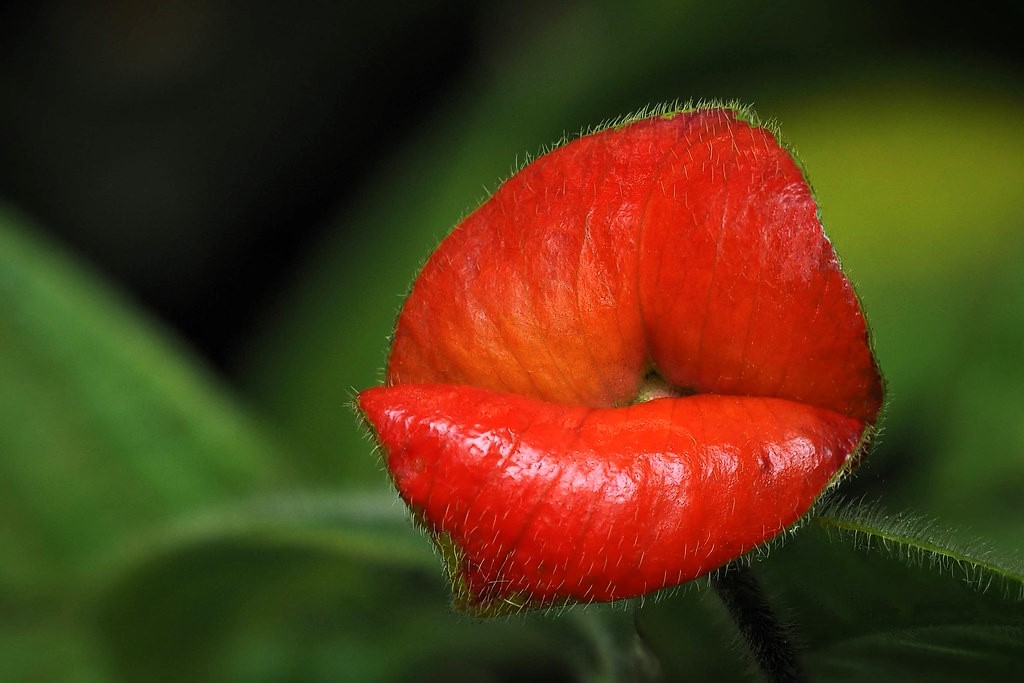Gardening is all about diversity, color and vibrancy. Hot Lips Plant, scientifically known as Salvia Microphylla, is a new addition that brings all of that into your garden. With its bi-color flowers, hardiness and pollinator attraction, it’s no wonder gardeners are making room for this beauty in their outdoor spaces. But why exactly is Hot Lips a must have in your garden? Let’s get into the reasons why.
The Unique Appeal of the Hot Lips Plant
Hot Lips stands out in the garden for several reasons, mainly because of its looks. The name Hot Lips might make you think of bright showy flowers and this plant delivers. The flowers of Hot Lips are red and white, bi-color and look like lips. This isn’t just a one off, it’s a feature that’s consistent throughout the blooming season.
The looks aren’t just for show. It adds a pop of color to the garden, and complements other plants with its bright colors. The flowers of Hot Lips can also change from red to white depending on temperature and light conditions, so your garden will look different as the seasons change. Imagine having a plant that gives you a different color palette as the seasons change – this is what Hot Lips gives you in your garden.
Adaptability and hardiness: a gardener’s best friend
Gardening is not just about picking the most beautiful plants; it’s also about picking plants that can cope with different conditions. Hot Lips is super hardy so it’s a great choice for gardeners of all levels. Whether you’re an experienced gardener or just starting out, this plant is forgiving and allows for experimentation and learning.
Hot Lips are drought tolerant, which is becoming more and more important as water conservation becomes a priority. This means they can survive in areas where water is less frequent, so perfect for gardens in dry areas. They can also grow in different soil types, from sand to clay, as long as there’s good drainage. This means you can grow Hot Lips in temperate zones or more arid environments.
And because it can be pruned, you can shape it to your garden design. Whether you like a more formal look or a wild look, Hot Lips can be pruned to fit your style. It’s hardy so even after heavy pruning it will come back with new growth and stay as a strong, colorful feature in your garden.
Attracting Pollinators: Supporting Your Garden’s Ecosystem
One of the key components of a healthy garden is pollinators and Hot Lips is a pollinator magnet. Bees, butterflies and hummingbirds are drawn to its bright flowers so it’s a must have in a pollinator garden. By planting Hot Lips you’re not just adding beauty to your garden you’re also helping your local ecosystem.
Pollinators play a big role in the garden by helping to reproduce plants. As they move from flower to flower they carry pollen and enable the fertilization process that leads to seed production. This is essential for fruit, vegetables and many flowering plants. By attracting these good guys the Hot Lips plant ensures your garden stays productive and full of life.
And pollinators like bees and butterflies add to the ambiance of your garden. Watching them flit from flower to flower is a dynamic and fun part of being outdoors. The Hot Lips plant brings these important visitors to your garden so it’s more than just a plant – it’s a player in the garden ecosystem.
Extended Blooming Season: A Long-Lasting Garden Beauty
Another reason to have Hot Lips is its longer blooming season. Most plants only flower for a few weeks but Hot Lips blooms from late spring to first frost. That means you get to enjoy its flowers for most of the year and it’s a constant source of color and life in your garden.
The longer blooming period also means the Hot Lips plant provides nectar for pollinators over a longer period. This continuous blooming adds to the visual appeal of your garden and supports the health and sustainability of the local pollinator population.
The longer blooming period of the Hot Lips plant also means you don’t have to constantly rotate plants. With its months of flowering it reduces the need for frequent replanting and saves you time and effort while keeping your garden looking full of life.
Low Maintenance: Ideal for Busy Gardeners
Gardening can be a time suck especially when dealing with high maintenance plants. Hot Lips is low maintenance so if you love gardening but don’t have hours to spare, this is the plant for you. It’s more resilient than other plants so requires less attention.
Once established Hot Lips needs minimal care. It’s pest resistant so you won’t have to spend as much time dealing with common garden pests. And it’s drought tolerant so you won’t have to water as often which is a big bonus during hot summer months or in areas with water restrictions.
Even when it comes to feeding Hot Lips is not demanding. It benefits from occasional fertilization but doesn’t need constant feeding to thrive. This plant is easy going so you can enjoy the beauty and benefits of gardening without the stress of constant maintenance, perfect for both new and experienced gardeners.
Versatile Planting Options: Perfect for Any Garden Setting
Hot Lips is versatile in where and how you can plant it. Whether you have a big garden, a small urban space or even just a balcony this plant will adapt to your needs. It grows in garden beds, borders and containers so you have plenty of options to fit it into your garden design.
In garden beds and borders Hot Lips is a mid layer plant adding height and depth to your garden design. Its bright flowers can be a focal point or a contrast to other plants. In containers Hot Lips can brighten up patios, balconies and small spaces so it’s a great choice for gardeners with limited space.
Hot Lips’ adaptability to different planting environments makes it suitable for all garden styles. Whether you’re going for a formal structured garden or a more relaxed natural look Hot Lips can be slotted in. This flexibility combined with its striking looks and low maintenance makes Hot Lips a very versatile addition to any garden.
The Hot Lips Plant and Climate Change: A Resilient Choice
As gardeners become more aware of climate change, choosing plants that can cope with changing weather is more important than ever. Hot Lips is perfect for this. Drought tolerance and temperature tolerance makes it a great choice for climate uncertainty.
In hotter, drier summers Hot Lips can survive with hardly any water, reducing the strain on local water resources. It can also adapt to different soils so can survive where other plants may struggle. A smart choice for gardeners wanting to create climate resilient gardens.
And Hot Lips long blooming season means it can still provide nectar for pollinators as the climate changes. As temperatures fluctuate having plants that can provide consistent food sources for pollinators is key to healthy ecosystems. Hot Lips can bloom in many conditions so is a great addition to any garden wanting to support biodiversity in climate change.
The Hot Lips Plant’s Role in Sustainable Gardening
Sustainable gardening is becoming more popular as people look to reduce their footprint. Hot Lips plays a part in this as it uses less water, no chemicals and attracts beneficial insects.
Because it’s drought tolerant Hot Lips can reduce the need for frequent watering which is a key part of sustainable gardening. Less water use not only conserves this precious resource but also reduces the gardener’s reliance on municipal water supplies. Especially important in areas where water restrictions are in place or during drought.
The plant is pest resistant so there’s less need for chemical pesticides which can harm the environment and non target species. By reducing or eliminating the need for these chemicals gardeners can create a healthier more sustainable environment for plants and wildlife.
And Hot Lips attracts pollinators and beneficial insects which helps the overall health of the garden ecosystem. These insects control pest populations naturally reducing the need for chemical intervention and creating a balanced sustainable garden.
Incorporating the Hot Lips Plant into Your Garden Design
Building a beautiful and functional garden can be tough, but Hot Lips is the answer with its versatility and looks. Whether you want a garden that’s full of color, one that attracts wildlife or a low maintenance retreat, Hot Lips can be the star of the show.
In a color garden the Hot Lips plant can be used to create bold contrasts with its red and white flowers. Combine it with plants that have darker foliage or single cultured flowers to make its bicolor blooms pop. You can also combine it with other salvias or drought tolerant perennials to create a cohesive colorful space.
For wildlife gardens the Hot Lips plant’s ability to attract pollinators makes it a must have. Place it near other nectar rich plants and you’ll create a haven for bees, butterflies and hummingbirds and turn your garden into a thriving ecosystem. The plant’s long blooming season means these creatures will have a constant food source throughout the warmer months.
In a low maintenance garden the Hot Lips plant is a star with its low care requirements. It can be planted in mixed borders where it will add height and color without needing constant attention. Its toughness and versatility makes it perfect for gardeners who want a beautiful garden without spending hours on upkeep.
So there you have it: the Hot Lips plant is a garden essential
In summary the Hot Lips plant is a must have for any garden with its looks, toughness, pollinator friendly and versatility. It can thrive in many conditions and has low maintenance needs so it’s perfect for gardeners of all levels. Whether you want a colorful garden, support local wildlife or just a reliable beautiful plant in your collection the Hot Lips plant is the answer.
When you put the Hot Lips plant in your garden you’re not just getting a pretty plant – you’re making a decision that benefits your garden’s biodiversity, sustainable gardening and the overall health and beauty of your outdoor space. The Hot Lips plant is a garden essential that every gardener should have.

